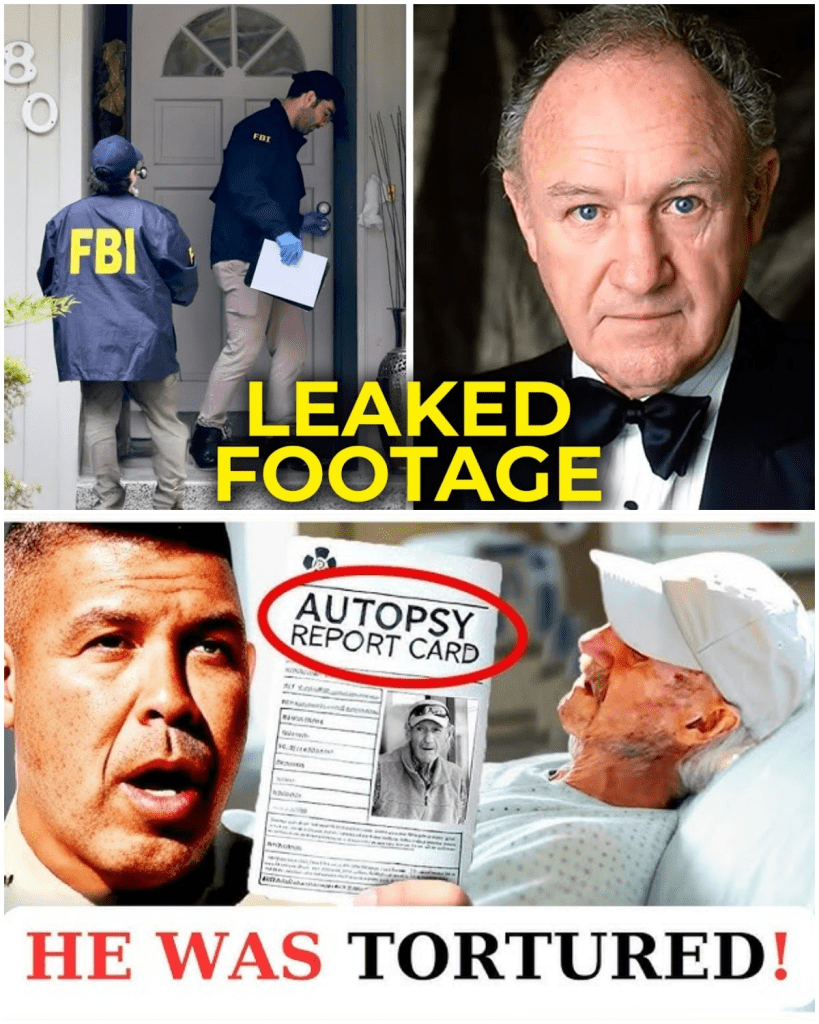
Jean Hackman’s death was not simply a tragedy—it was a shocking mystery that continues to grip Hollywood and the public.
The FBI’s recent release of a suspect list has only deepened suspicions, implicating close associates, friends, and even family members.
What unfolded inside the New Mexico home of Jean Hackman and his wife, Betsy Arakawa, has left more questions than answers.
On a cold February morning in New Mexico, authorities discovered the lifeless bodies of Jean Hackman, a revered actor who had long retreated from public life, and his wife, Betsy Arakawa.
Initial reports cited natural causes: Hackman’s death from heart disease, complicated by alleged disorientation from Alzheimer’s, and Arakawa’s sudden passing due to the extremely rare Hantavirus.

Yet investigators found numerous irregularities, triggering a deeper probe into what truly happened within the serene, isolated cabin.
Firstly, discrepancies surrounding Hackman’s Alzheimer’s raised immediate red flags. Friends and neighbors firmly disputed claims of his severe cognitive impairment.
They insisted Hackman remained lucid, actively writing, driving himself to errands, and engaging socially. Why then, did reports describe him as incapacitated in his final days? If Hackman was indeed coherent, why didn’t he seek help after his wife’s passing?
Equally baffling is Betsy’s death attributed to Hantavirus—a disease rare enough to be virtually unheard of, particularly in a meticulously maintained home free from rodent infestations.
Arakawa’s lifestyle showed no exposure risk, intensifying suspicions. Investigators asked how such a rare infection could coincidentally strike at precisely the time her husband purportedly faced his own health crisis.
Further suspicions arose when authorities uncovered there were no emergency calls from the household. Neither Hackman nor Arakawa attempted to reach out for help despite the apparent medical emergencies.

Phones remained untouched, calls unmade, messages unsent. This eerie silence defied logic.
Authorities delved deeper into the timeline, identifying glaring irregularities. Hackman was reportedly alive but isolated in his home for seven full days after his wife’s death—without signs of meals prepared, water consumed, or basic necessities used.
Police questioned how a 95-year-old man, allegedly disoriented from Alzheimer’s, could have survived unassisted.
Even more disturbing was evidence from Hackman’s pacemaker, which recorded no heartbeat signals after February 18—the same day Betsy died. If Hackman survived for another week as suggested, why did his pacemaker fall silent?
Investigators also discovered a chilling clue involving the couple’s dog, Zenna. Locked inside a small cage within a closet, Zenna was found deceased, starved, and dehydrated.
Yet Hackman’s two other dogs survived, visibly traumatized and afraid. Why was Zenna locked away, especially after recent surgery? Who had the lucidity or intention to confine the recovering animal, and why?
Betsy’s phone records compounded the mystery. Regularly active and social, Betsy abruptly ceased all communication on February 11. Surveillance footage showed her alive at a local pharmacy, possibly purchasing medication, just days before her death.

Did she sense impending danger or illness? Her sudden, total silence and the inexplicable gap in her phone records between February 11 and February 14 raise unsettling questions.
A suspicious phone call attempt occurred on February 15, lasting just moments. Had she tried—and failed—to seek help?
Hackman’s body was found in an enclosed room, curiously locked from inside, with no evidence of forced entry. Items like his walking stick and sunglasses were meticulously arranged, suggesting no struggle occurred.
Yet, if Hackman suffered a sudden, incapacitating heart attack, would the scene appear so deliberately composed?
Finally, investigators grappled with the unexplained anomaly in the home’s security camera footage—footage that suspiciously malfunctioned exactly when Hackman’s pacemaker stopped recording.
Was this merely a coincidence, or deliberate sabotage to obscure the identity of someone entering the residence?
Despite official announcements about causes of death, law enforcement refuses to close the case, acknowledging too many inconsistencies. Could these tragic events truly be coincidental, or is a sinister truth still hidden?
Hollywood and the world await answers with growing unease, as each revelation deepens the mystery of Jean Hackman’s final days.


